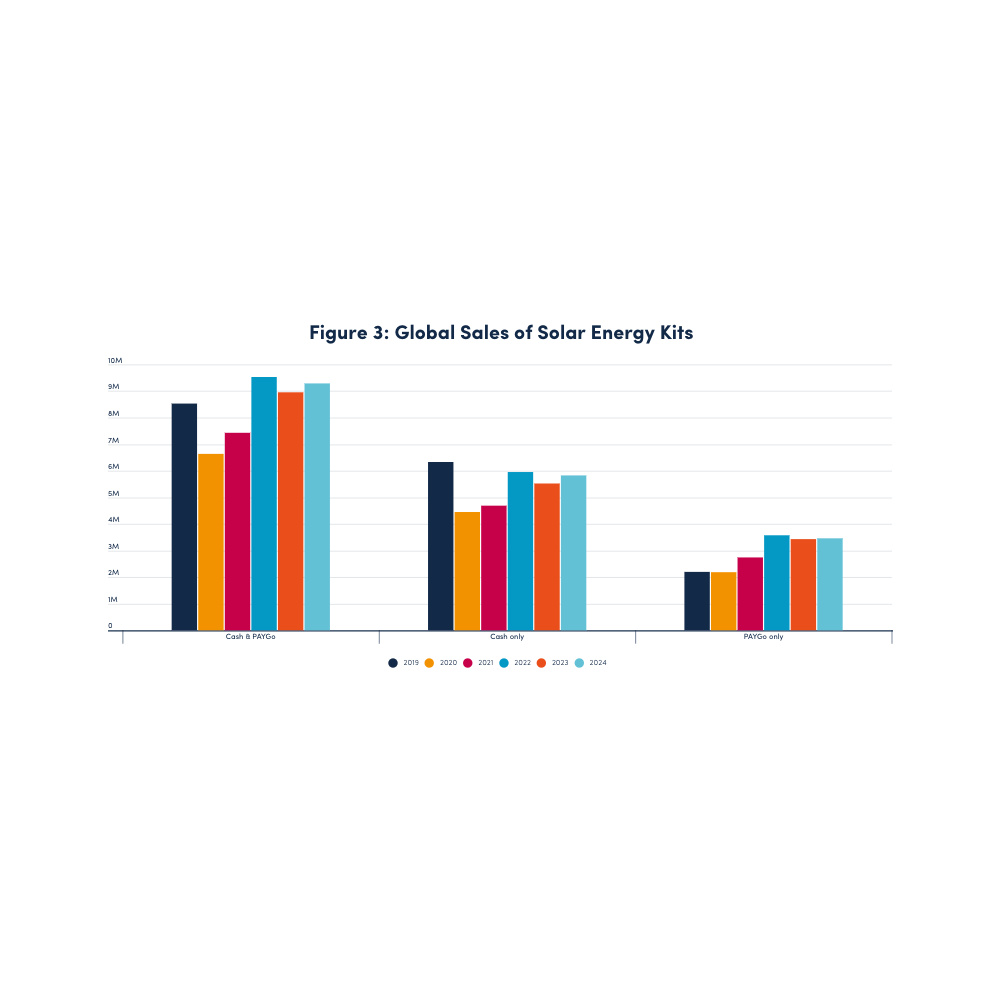Hard times for pay-as-you-go model

According to the Global Off-Grid Solar Market Report Annual Sales & Impact Data 2024, published on May 26, 2025, by the global off-grid solar industry association Gogla, 9.3 million solar kits were sold last year by grid-connected companies.
This slight increase compared to 2023 remains below the record level observed in 2022. This momentum is mixed, even though demand remains strong in areas not connected to national grids, particularly in sub-Saharan Africa—with East Africa driving the overall market in 2024.
More generally, on a global scale, the sector does not appear to have regained the momentum seen before the 2021-2022 crisis, when more difficult access to financing complicated the development of the off-grid market. Nevertheless, Gogla highlights the resilience of the sector, in a context marked by inflation and financial difficulties for the targeted households.
An additional 20 million people benefited from the energy produced by a solar kit purchased in 2024, according to the report's estimates, bringing the cumulative total to 138 million users since 2010—without specifying whether these systems are still in operation.
Structural difficulties of pay-as-you-go
The majority of kits sold rely on the pay-as-you-go (PAYGO) model, which allows households to acquire a solar system through installment payments over several months. Presented as a solution for energy inclusion, this formula has also attracted companies from other sectors (digital, telecoms, etc.) to the energy market. However, it relies on the ability of households to make regular repayments, often in precarious economic contexts marked by instability, inflation, or irregular income. It also faces a clear limitation: households have little room to increase their electricity spending, and off-grid solar power often remains more expensive than conventional grid electricity.
Sales trends suggest a structural limitation to this model: when purchasing power declines or stagnates, even microcredits become inaccessible. For some observers, this raises questions about the long-term sustainability of a model based on the debt of the most vulnerable households.
Subsidies
Faced with this limitation, impact financing such as Results-Based Financing (RBF) is increasingly emerging as a necessity, and not simply a one-time lever for the sector. In concrete terms, it allows companies to lower their royalties in the event of a drop in sales, and conversely, the amounts to be repaid increase proportionally with the revenue generated. Sarah Malm, Executive Director of GOGLA, emphasizes the importance of these subsidies for the sector and asserts that “there is an urgent need for greater clarity and long-term stability in the implementation of these schemes.” Subsidies help reduce the final cost for users without compromising the profitability of operators (although the money paid is still funded by taxpayers). However, they require a structural commitment from donors and public policies, which is often difficult to guarantee.
The report also highlights that international donors play a crucial role in structuring this financing, which requires long-term commitments that are often difficult to maintain. In 2024, a joint initiative between the World Bank and the African Development Bank—aimed at electrifying 300 million people by 2030—could pave the way for new subsidy schemes for solar home kits and related devices. The C&I sector in focus
The report also includes, for the first time, data on two types of equipment intended for productive uses: solar generators (38,000 units sold) and walk-in solar cold rooms (578 units) in 2024. These devices, primarily used in commercial or agricultural activities, reflect a gradual expansion of the market into the C&I (Commercial & Industrial) segment, which is less dependent on household financing and potentially more structural for local economies.
In Africa, these uses include crop preservation, refrigeration in rural cold chains, and supplying small businesses or workshops—sectors considered strategic by many stakeholders. Finally, the association calls for increased mobilization of companies to provide future editions of the report with more comprehensive sales data, in order to better guide public policies and financing.